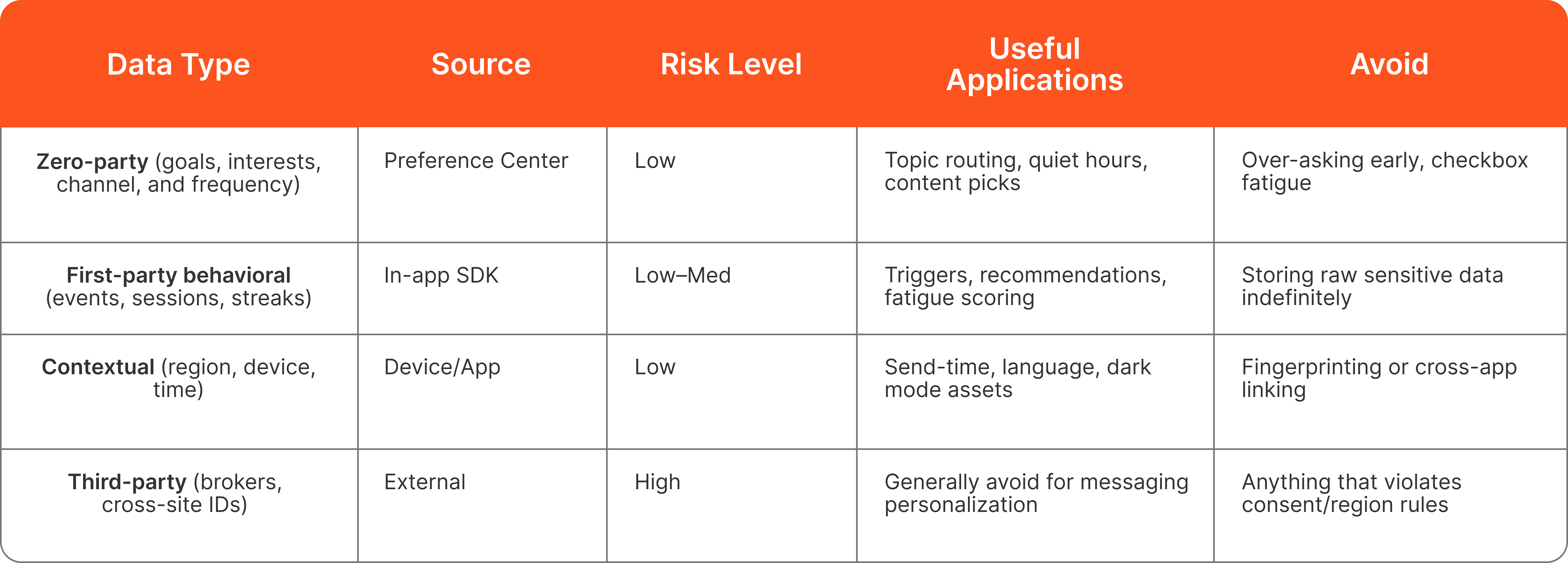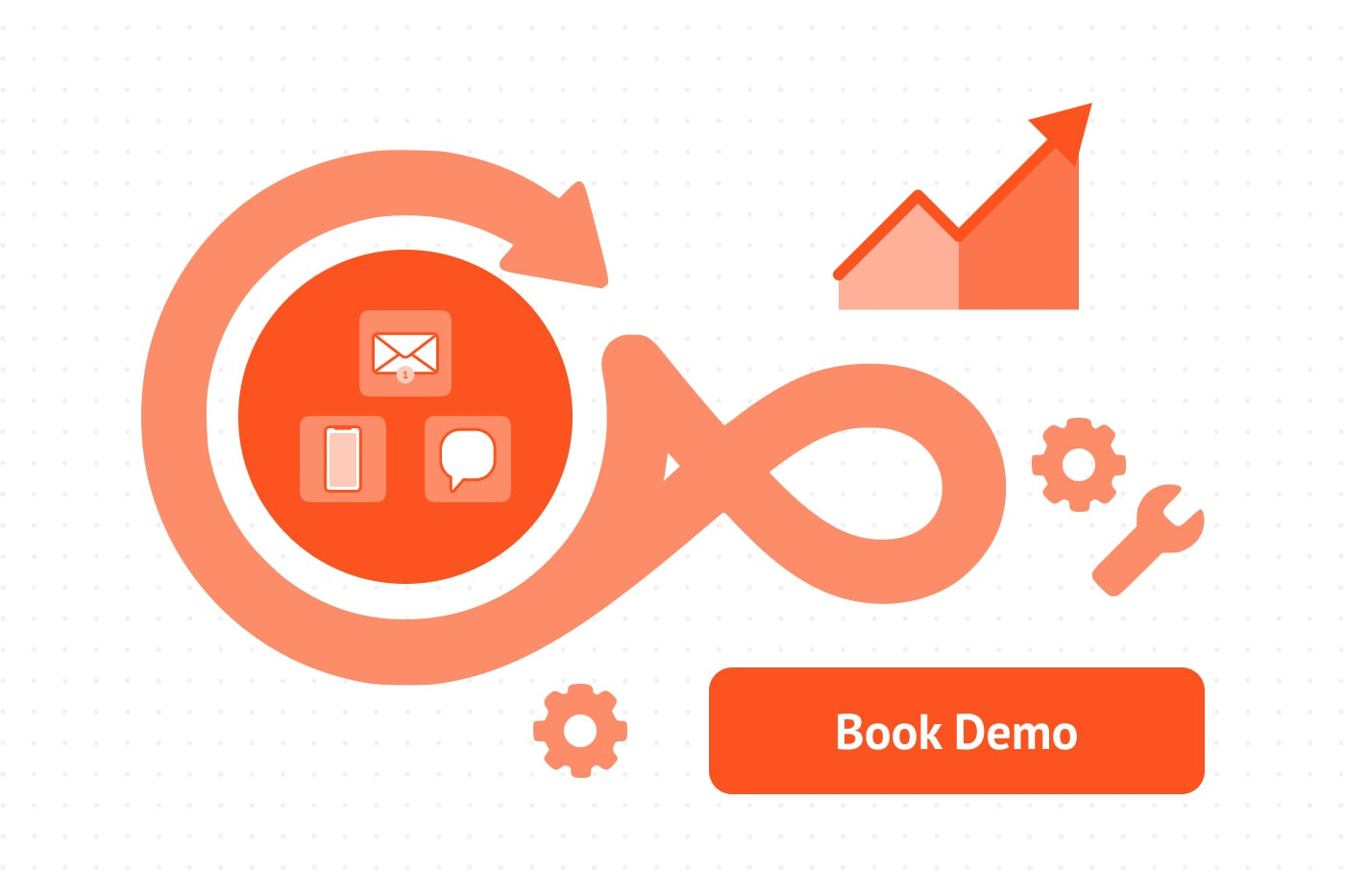
Alex Anikienko
Expert Writer
October 13, 2025

Alex Anikienko
Expert Writer
October 13, 2025

Businesses that communicate with their customers 1:1 typically see a whopping 29% higher open rates and 41% higher click-through rates in email campaigns compared to generic blasts.
Yet, as users grow savvier about their data, the line between relevant engagement and intrusive overreach has never been thinner. In fact, a staggering 78% of customers have avoided websites due to privacy concerns, and 67% have canceled purchases because of data mishandling.
Personalization shouldn’t feel like tailored spam. For your product, the winning play is privacy-first communication that engages each user based on data they knowingly share.
In this guide, you’ll learn 5 practical, low-risk ways to personalize lifecycle messages for your push, in-app, and email campaigns while respecting privacy boundaries. Drawing from Reteno’s extensive expertise in the field and real-world benchmarks, we’ll provide you with actionable steps to boost user retention and maximize revenue.

Think of personalized messaging as a way to build marketing communications that feel bespoke and encourage users to take the desired action. Product recommendations based on previous purchases and timely reminders tied to customer behavior are prime examples.
But here’s the rub: while 71% of consumers expect these tailored touches, 76% become frustrated or suspicious when brands misuse sensitive data or fail to provide personalized interactions.
Privacy violations are well-known business killers because they erode loyalty fast. Unchecked personalization can increase customer drop-offs and invite regulatory fines. The solution lies in focusing on consent-driven insights that respect user boundaries. By weaving in first-party data, preference controls, and trust signals, you create a virtuous cycle of more engagement, higher retention, and lower churn. This approach can boost revenue by 2.9 times and reduce costs by 1.5 times, clearly demonstrating its effectiveness.
The following strategies emphasize user control and minimal data footprints to improve engagement.
Switch from third-party cookies to first-party data, the gold standard, collected directly from your website, app, or CRM interactions. This includes purchase history, session behavior, and real engagement metrics, all under your direct control.
Proof in the Figures: 78% of businesses rank first-party data as their top personalization asset, and 48% of consumers say they will share their data for better brand experiences.
Preference centers are user-facing hubs where subscribers select notification topics, messaging frequencies, and communication channels. These same centers can also link to account security tips, encouraging users to rely on a password manager for safer access. They transform passive data collection into active, consent-based processes. This zero-party data, which is willingly shared customer preferences, is a real privacy gold mine.
Proof in the Figures: Marketers with robust preference centers report that 61% of their users opt for monthly sends.
Trust is the foundation of revenue opportunities. In turn, trust grows through open communication. Always explain why a message is personalized and how user data fuels it. This “privacy-by-design” approach will make your value proposition appear fair to users.
Proof in the Figures: A recent survey revealed that 78% of consumers have avoided a particular website, and 67% have decided against making an online purchase due to privacy concerns.
Go beyond blanket consents with layered options. Allow users to toggle specifics, such as location-based alerts or product category notifications. This strategy respects boundaries while enabling personalized messaging.
Proof in the Figures: Personalized, consented emails have 29% higher open rates and 41% higher click rates than bulk campaigns.
Adopt AI for predictive personalization, but gate it with ethical guardrails: focus on aggregate trends rather than individual profiling, and always include easy feedback loops.
Proof in the Figures: 89% of marketing leaders consider hyper-personalized communications essential for future success, and users are willing to spend 38% more with brands that resonate with their personal needs.
*Ethical AI refers to the development and deployment of artificial intelligence (AI) systems designed to align with human values and principles, such as fairness, transparency, accountability, and privacy.

Personalization doesn’t have to come at the expense of privacy. When done right, personalization builds trust — the most valuable asset for stronger customer retention, higher ROI, and sustainable product growth.
When you’re ready to put these strategies into action, Reteno provides everything you need: privacy-first personalization, omnichannel campaign orchestration, and AI-driven messaging flow optimization.

👉 Explore a Reteno plan that fits your goals, or book a personalized demo today to see how our privacy-centric tools can transform your customer communications.
Natalya Ustymenko
|
November 10, 2022
Find out what app personalization ideas you should implement to improve communication with your audience
Alex Danchenko
|
April 3, 2023
Find out how to use actionable techniques to personalize mobile UX with Reteno’s product recommendations engine

